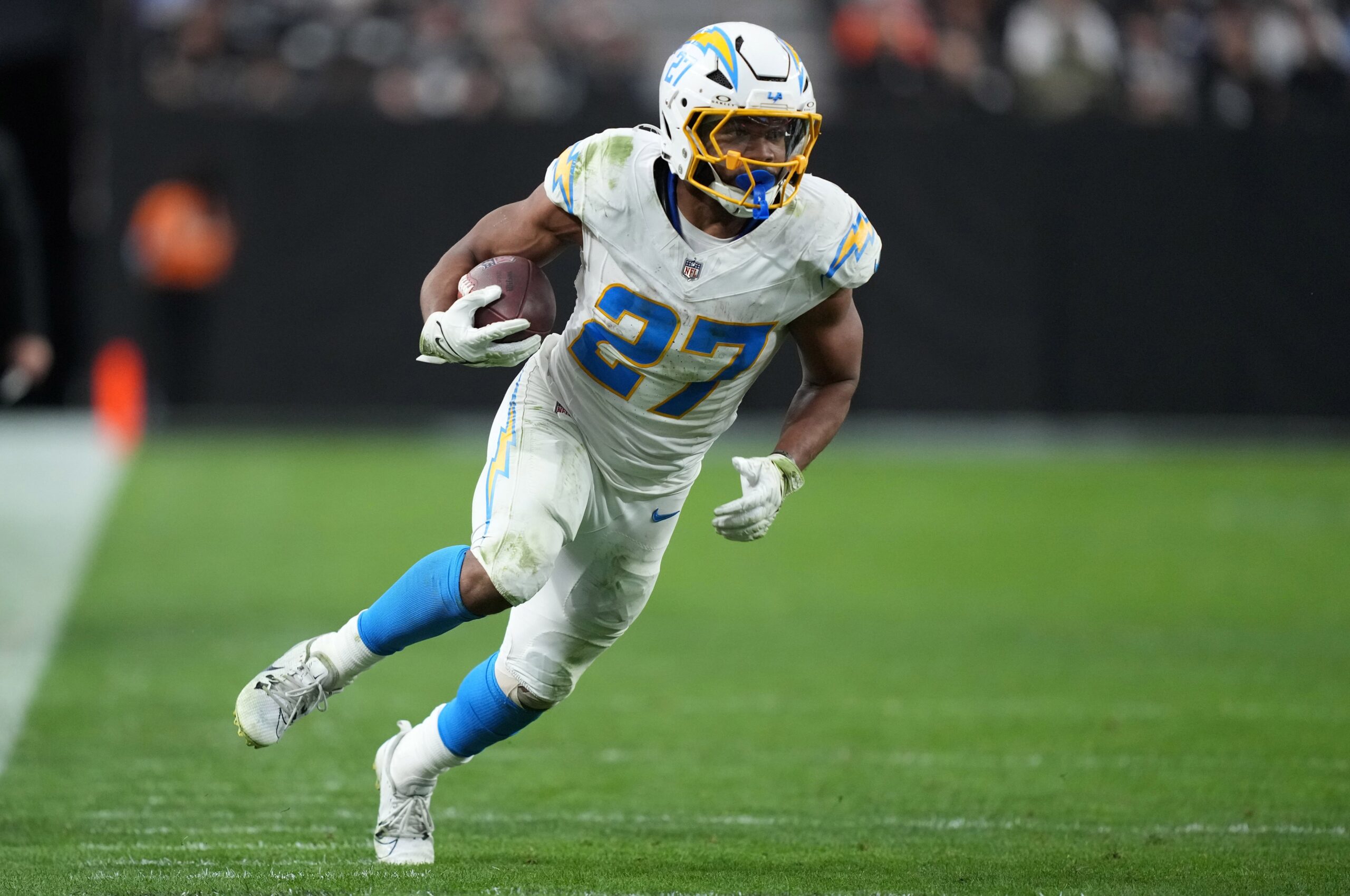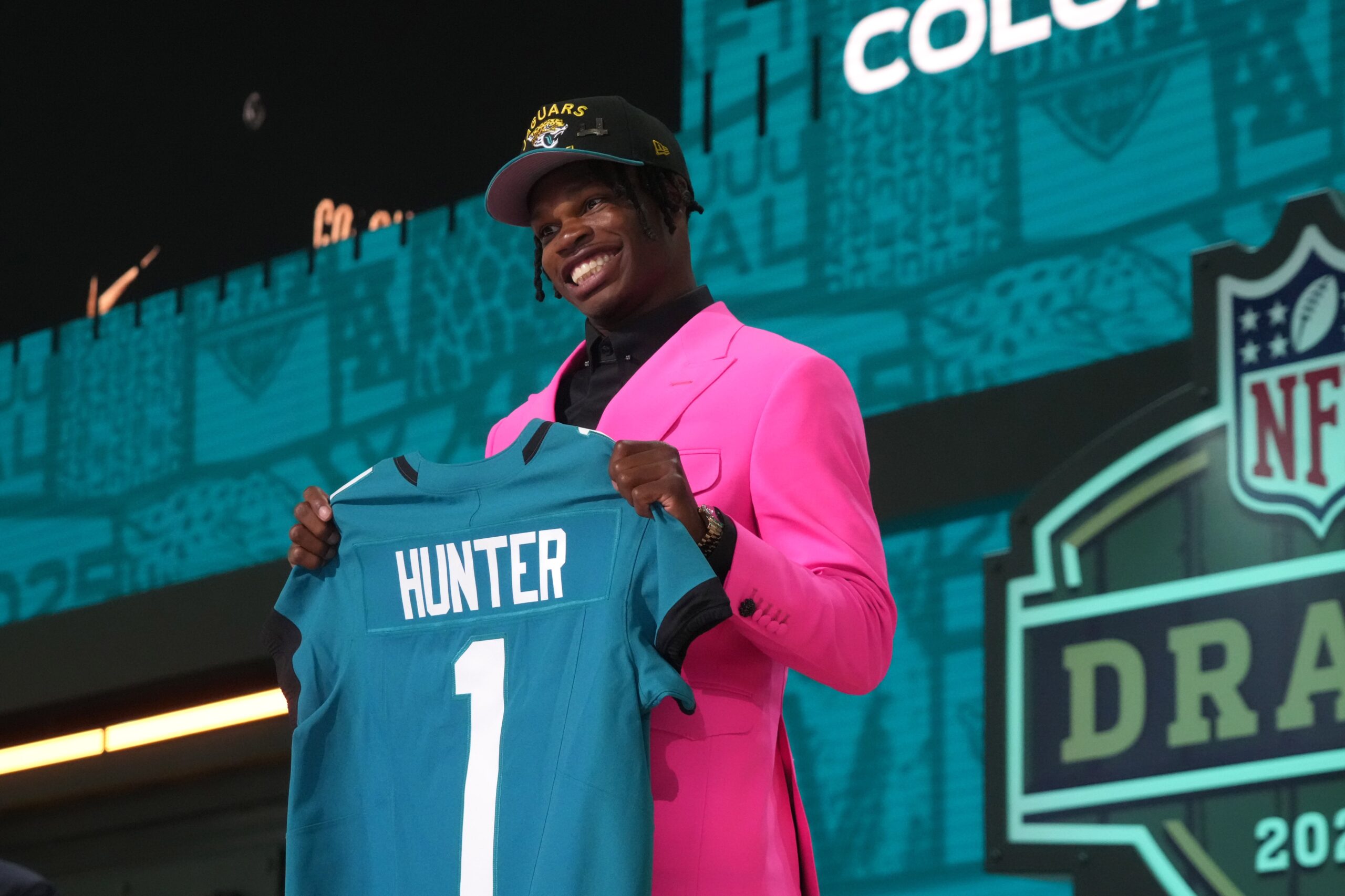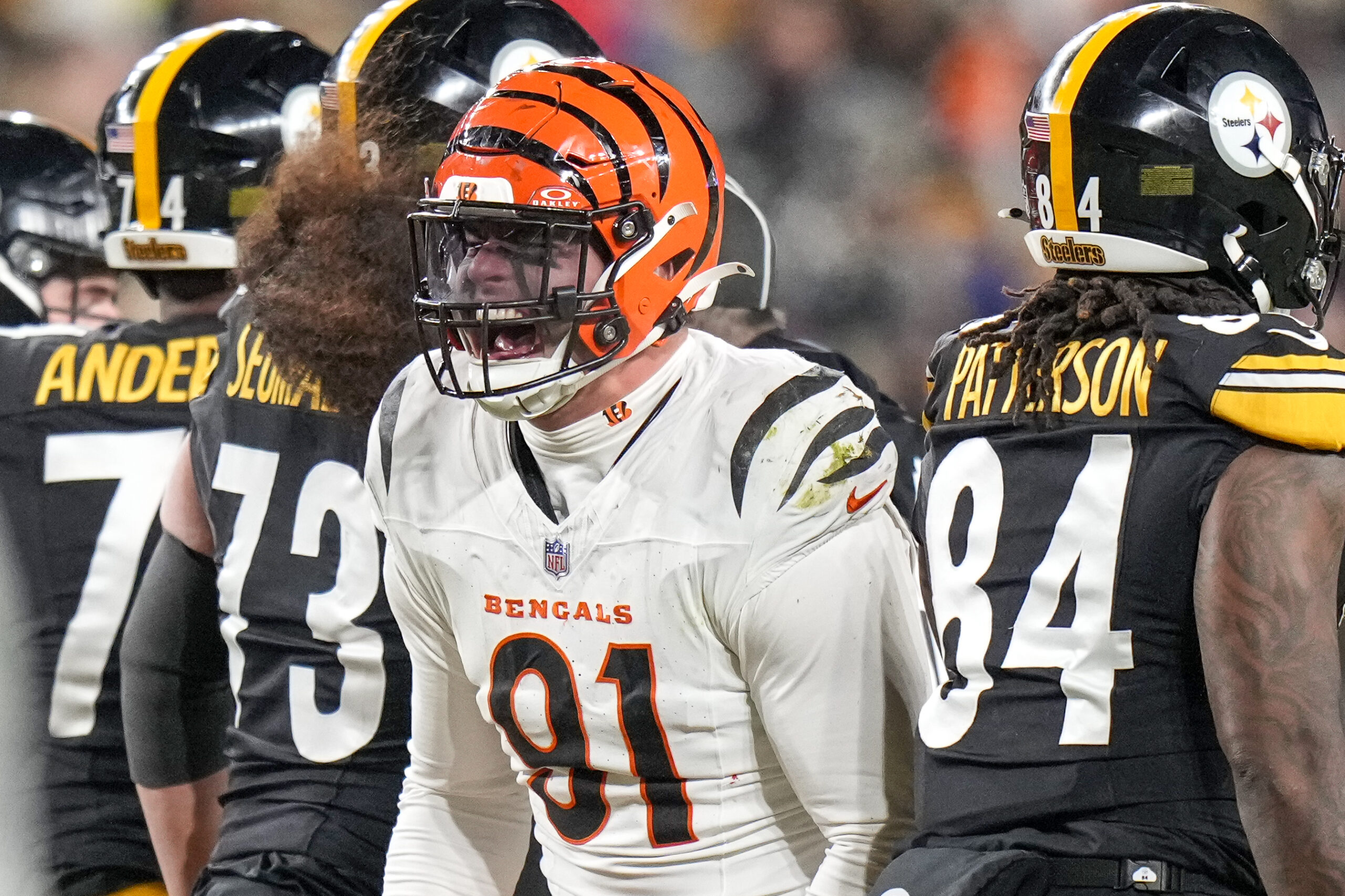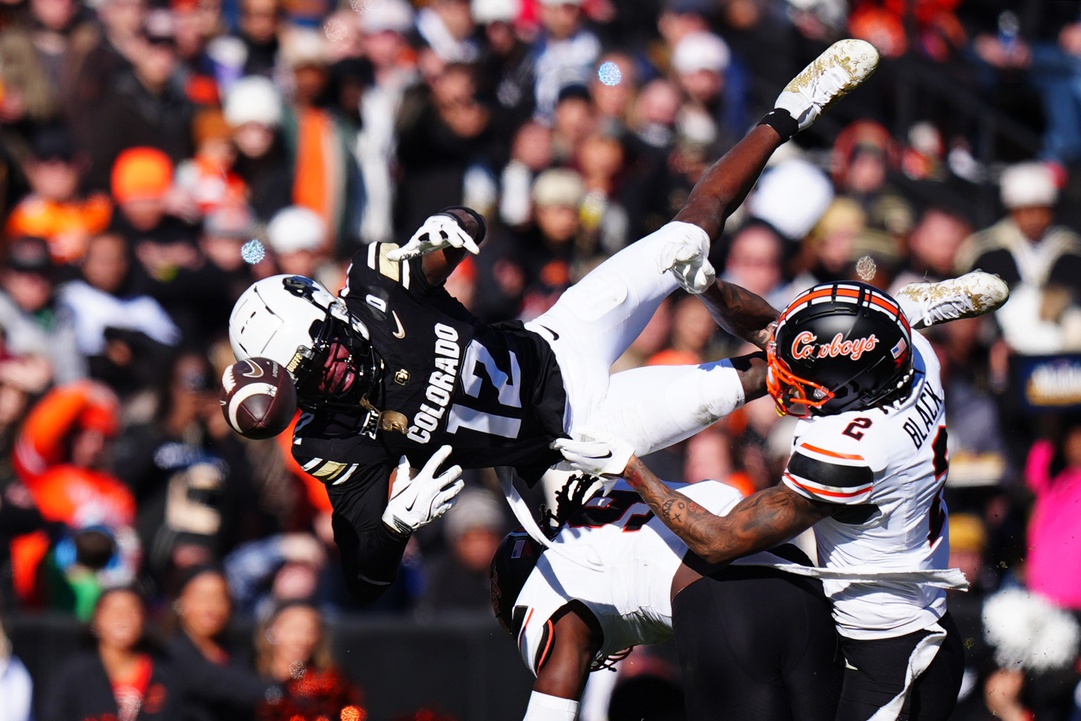Expert Analysis
5/22/24
9 min read
How Washington Commanders Can Build Offense Around Jayden Daniels
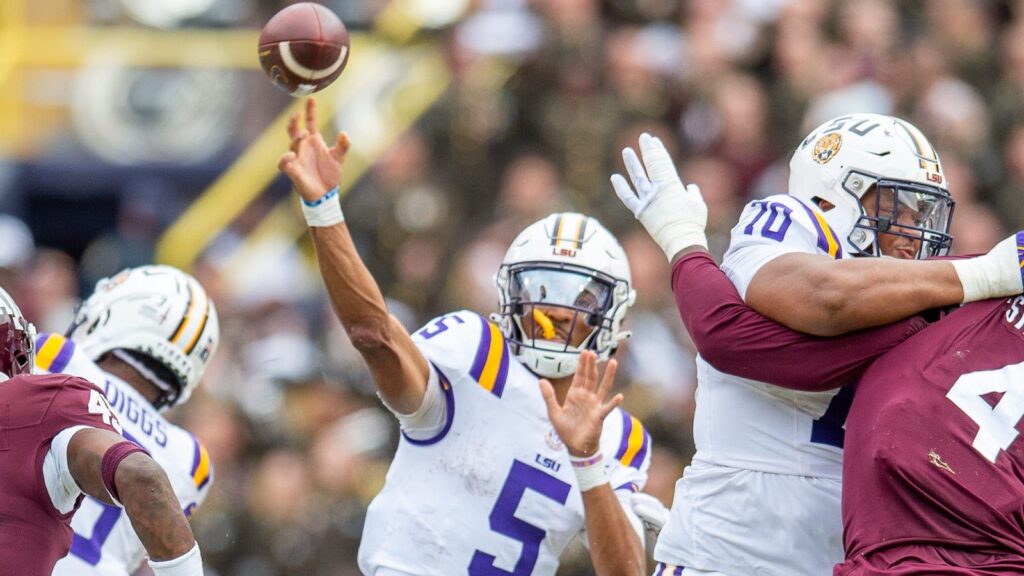
Jayden Daniels just had one of the most impressive statistical college seasons we’ve seen from a quarterback. His Heisman season, in which he eclipsed 3,800 passing yards and 1,200 non-sack rushing yards with 50 combined touchdowns, elevated his status from a potential Day 3 prospect to the second overall pick.
Daniels’ dynamic skill set propelled his breakout final season, and the Washington Commanders, under coordinator Kliff Kingsbury, will build an offense around it.
As we did with Caleb Williams, let’s dive into what a Daniels NFL offense could look like.
How To Build an Offense Around Jayden Daniels
It’s hard to start anywhere other than Daniels’ rushing ability, which will be the focal point of the offense and make everything else go.
Daniels has the straight-line speed and change of direction to be a game-changer in the run game.
51 yards for the TOUCHDOWN @JayD__5 is unreal
— LSU Football (@LSUfootball) November 12, 2023
📺 SEC Network pic.twitter.com/QqrFz7Ps61
While head coach of the Arizona Cardinals, Kingsbury was most successful developing a run game around Kyler Murray's mobility. That stretched into influencing the traditional ground game with the running backs, but Murray’s gravity and influence were the jumping-off point for the rushing attack. The Cardinals were fourth in EPA per rush during Kingsbury’s four-year tenure.
The Cardinals found several ways to get Murray into the open field. One of Kingsbury’s strengths as a play designer is creating open running lanes. Because of the spread formations Kingsbury has favored (though it should be noted some of his best work came in 12 personnel during his first season in Arizona), the Cardinals often faced light boxes.
No team had a higher rate of runs into boxes of six or fewer defenders than Arizona from 2019-2022 (40.2 percent, per TruMedia).
On the two plays below from the same game against the Cowboys, the Cardinals aligned in their typical 3x1 set with the back to the isolated receiver side. Before the snap, the back motioned to the trips side, pulling a linebacker from an already light box and opening up running room for a quarterback draw.
Some fun Kliff/Kyler QB run game.
— Dan Pizzuta (@DanPizzuta) May 21, 2024
3x1, motion RB to the trips side further clears out box, creates room for QB draw. pic.twitter.com/5LCdvLVQ4y
Daniels has done some damage on quarterback draws from empty.
MY GOODNESS @JayD__5
— LSU Football (@LSUfootball) October 7, 2023
📺 ESPN pic.twitter.com/4cGevuJPoM
Spacing will matter for Daniels, a quarterback who has often sought out contact from defenders.
Their spatial awareness in the open field makes runners like Murray and Lamar Jackson special. They know where the nearest defender is and will rarely take a big hit by either sliding or running out of bounds.
That is not the case for Daniels, who took some big hits in college. Decreasing the risk of hits in the run game will be as important to sustained success within that offense element as the actual design and execution.
Steal From an NFC East Rival
From this subheading, it's understandable Jalen Hurts would come to mind — another mobile quarterback who did his best passing work deep down the sidelines. But we're actually going back to the 2022 version of the New York Giants offense with Daniel Jones.
This isn’t to compare Daniels and Jones as players, but the 2022 Giants' offense helped cover up flaws in the quarterback and offensive personnel that could apply to the Commanders.
Jones' biggest weakness is his pocket presence. Jones does not feel pressure well, and when he is behind an offensive line that struggles to hold up in pass protection, those struggles are magnified. The Giants prevented Jones from playing in the pocket as much as possible in 2022 when they finished 11th in EPA per play.
A total of 26.1 percent of Jones’ dropbacks that season finished outside the pocket, the league's third-highest rate. Much of that was by design, unlike Marcus Mariota and Justin Fields, who finished above him. The bootleg game was a big part of the Giants’ offense, which allowed Jones to get on the move, potentially find an open receiver on a shallow crosser, or run if a passing option was not immediately available.
That plan decreased Jones’ sack and interception rates while generally keeping the quarterback out of dangerous situations.
Daniels has much better pocket presence, but an offensive line with some quality concerns, especially at tackle, paired with a quarterback whose reaction to pressure is often to run, could create some controlled chaos for Washington. That could allow for more options in the passing game.
When Daniels gets out of the pocket, it’s often to run. However, allowing him more designed plays to get outside would allow more passing opportunities designed outside the pocket, where the quarterback has shown he can make plays with his arm.
The throw by @JayD__5 and @BrianThomas_11 TO THE HOUSE
— LSU Football (@LSUfootball) October 22, 2023
📺 SEC Network pic.twitter.com/irKcm8xsUj
Having legitimate options to force opponents to defend the run and the pass when the quarterback gets outside would create a nearly impossible conflict for defenders.
Open Up The Middle Of The Field
This might be the area where the quarterback and offensive coordinator must come together in a concerted effort to make this a reality in the offense. If Daniels has a weakness as a passer, it’s processing and firing on throws in the middle of the field. This is not rare for a mobile quarterback like Daniels, but it is a necessity for sustained production in the passing game.
Despite his quick release, Daniels had a higher-than-expected snap-to-throw time during his two seasons with LSU, per Sports Info Solutions. That mostly comes up in the middle of the field, where Daniels will wait a tick or add an extra hitch before firing off a throw.
Per Derrick Klassen’s charting at Reception Perception, just 9.6 percent of Daniels’s throws went to the intermediate middle of the field last season — one of the most valuable areas of the field.
Opening up the middle is also not one of Kingsbury’s biggest strengths as a play-caller or designer. While Arizona’s receivers mostly stayed to the same side so pace could be used as a weapon, there was not a lot of flow into the middle of the field.
Kingsbury’s offense featured a lot of static and stopped routes on the outside. Under Kinsbury, Murray threw the ninth-highest rate of hitches and was just 30th in the rate of targeting crossers.
When the whole field is not available to manipulate, it puts a lot of stress on the individual players to create something. At its worst, Arizona’s offensive game plan was “Kyler, make something happen.”
Putting that type of weight on Daniels immediately could exacerbate some of his worst tendencies and make things like running at the first sign of trouble a potential pitfall instead of the get-out-of-jail-free card it was so often in college.
Create Dynamic Deep Shots
Daniels just had one of the best deep passing seasons for a quarterback going into the NFL. When we put together our look at quarterback accuracy before the draft, Daniels had an 88th-percentile on-target percentage and 100th-percentile completion percentage on throws of 20 or more air yards.
It’s clear Daniels can air it out with accuracy and touch.
WHAT A BALL @JayD__5
— LSU Football (@LSUfootball) September 30, 2023
Hauled in by @alltimegreattt
📺 ESPN pic.twitter.com/bV5KTDy8Qz
Those deep balls were at their best on go routes in rhythm and slot fades. It’s tough to live exclusively that way in the NFL. Daniels had a ton of trust in Malik Nabers and Brian Thomas Jr. to get open on those routes, deservedly so, but it was only when he had that trust that he let those throws go.
Terry McLaurin has lived off getting open downfield and fighting for deep balls, usually on a poorly placed pass. During the past three seasons, McLaurin is 13th in deep receiving yards. Jahan Dotson can also win on those slot fades and should be given more opportunities to turn those into receptions. But even if there is immediate trust and chemistry on those routes, there should be more to the deep passing game than that.
For a quarterback so good statistically at going deep, Daniels had a below-average rate of throws that traveled 20 or more air yards (15.6 percent). When there were some more designed deep options, Daniels was not always aggressive and instead chose the shorter option. His rate of 47.7 percent of passes between 1-10 air yards was the second-most in this class.
If Washington can use more deep posts or corners — routes that allow the receivers to come open with route running and allow Daniels to anticipate an opening — the offense could be more explosive downfield at a higher rate. Windows are smaller in the NFL, so relying on a high success rate of go balls is a tough ask for any quarterback.
This will be another place where Kingsbury needs to improve. The Cardinals didn't often have a true deep threat, but Arizona's offense often devolved into the horizontal raid with throws near the line of scrimmage.
There was a stretch to start the 2021 season when Murray completed more than 50 percent of his deep passes and threw them on around 19 percent of his attempts before the offense fell apart.
In that season's first half, Murray had his lowest rate of deep passes come as go balls (39 percent, more than 60 percent in other seasons). He had a career-high 22 percent of those passes as corner routes and 17 percent of those throws as deep crossers. Those are the routes Washington should implement to get the most out of Daniels and the receivers down the field.
Daniels has many strengths as a quarterback, and his traits can lead to an explosive offense, both through the air and on the ground. The elements are there in Washington to build this type of offense, and the quicker those elements are added, the better.


